Collage, a Cubist invention, gets its name from the French “coller,” meaning glue. As a house decorator in his earlier career, Georges Braque was certainly very familiar with wallpapering. The simple act of pasting something from real life onto a painting, on the other hand, was a revolution that shook the art world.
Still Life with Chair Caning (1912) (photo 1) is the first collage by Pablo Picasso. An oilcloth with the cane seat of a chair printed on it was glued onto the oval framework of a canvas instead of depicting the chair (not even in Cubism did objects seem to be all fragmented). This direct “quotation” from reality in place of a hand-drawn effort problematized the mystified “master’s touch” by the act of cutting and gluing, and it also confuses the line between mass-produced goods and high art.
The “readymade” introduced in 1914 by Marcel Duchamp, once a Cubist, can be understood in the same vein, although the idea of readymades was pushed further, into complete rejection.
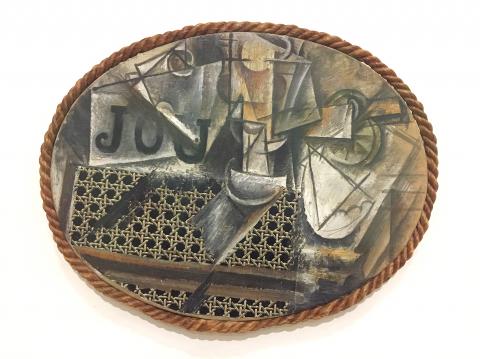
Photo: Lin Lee-kai, Taipei Times
照片:台北時報林俐凱
Art has since then become irrevocably conceptualized, igniting meta-thinking about the question “what is art?” This continues to this day, and these concepts have come to override the physical artwork and become art itself.
From Paul Cezanne, Cubists learned the method of abstraction — breaking down reality into geometric elements and reassembling them in art (see Bilingual Arts on Nov. 30). As a favorite motif of Braque and Picasso, violins/guitars, which are seen in many of their works, were repeatedly used to experiment with the Cubist style.
How the early Cubists broke down reality can be seen in Braque’s Violin and Palette (1909, photo 2). The violin, sheet music, and other shapes were “crushed” and then put back together like a mosaic.

Photo: Wikimedia Commons
照片:維基共享資源
Braque’s Guitar (Scouts) (1913, photo 3) ventured much further from representation. Only wood grain paper, newspaper fragments, and a few charcoal lines were used as keywords or reminders, leaving the viewer to reconstruct the objects and fill in the gaps communicated by the art based on their own knowledge. Although this way of creating meaning is highly dependent on signs, it is not completely abstract, and the attempt to “representation” can still be seen in traces of reality.
Picasso’s Violin and Bottle on a Table (1915, photo 4) is just like a 3D version of Braque’s Guitar (Scouts), echoing the pair’s close artistic relation, and demonstrating the application of Cubist principles to sculpture.
Cubism was like a “big bang” of the art world. From it radiated collage, abstraction, avant-garde art and other movements, which would later each develop their own galaxies, making modern, post-modern and contemporary art seem like footnotes to Cubism.
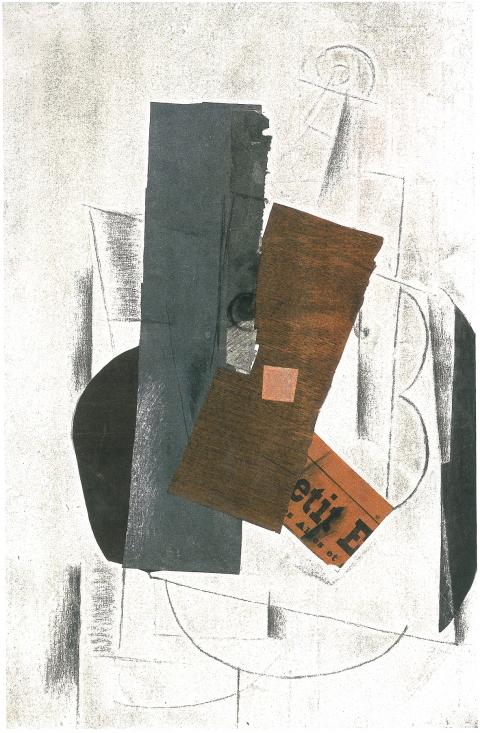
Photo: Lin Lee-kai, Taipei Times
照片:台北時報林俐凱
(Lin Lee-kai, Taipei Times)
立體派的另一項發明是拼貼(collage)。拼貼一詞來自法文「coller」,意為用膠黏上。布拉克原從事室內裝修工作,因此對於貼壁紙再熟悉不過。然而,將現實生活中的東西貼到一幅畫上,這簡單的動作,卻是驚天動地的藝術革命。
《有藤椅的靜物》(一九一二年)【圖一】,是畢卡索第一件拼貼作品。在橢圓形畫面的左下方,他貼了一塊印有藤椅紋路的油布,取代了對藤椅的描繪(即便是立體派式「支離破碎」的呈現方式)。這種對現實的直接「引用」,代替了手工繪製,使得對「大師手筆」的崇拜無以為繼,也混淆了大量製造的大眾物品與高級藝術間的界線。
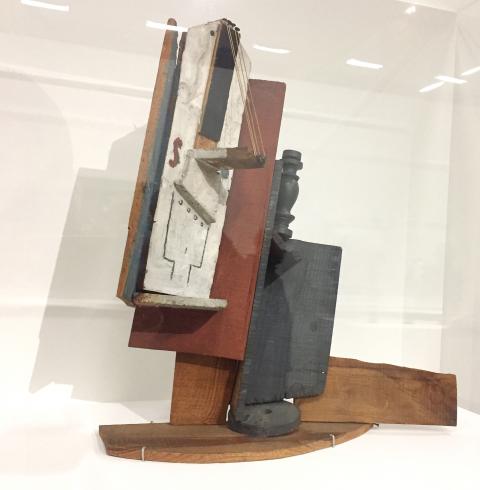
Photo: Lin Lee-kai, Taipei Times
照片:台北時報林俐凱
曾為立體派一員的杜象在一九一四年起引進了「現成物」(readymade),即可見其相同脈絡,但卻是更激烈的拒絕態度。
藝術從此也變得「概念化」,一發不可收拾,點燃了持續至今對「何謂藝術」的後設思考,使這些概念凌駕了藝術品的物質性,而成為藝術本身。
立體派從塞尚學到了將現實景象拆解為基本要素、再重新組合的抽象方法(參見十一月三十日的「雙語藝術」)。提琴/吉他是布拉克與畢卡索鍾愛的母題,藉由對這些弦樂器造型的實驗,反覆推敲立體派的風格形式。
由【圖二】布拉克的《小提琴與調色板》(一九○九年),可看見早期立體派對現實的破解方式。小提琴、琴譜等形體壓碎後,像馬賽克一樣鑲嵌到平面上來(雖然「Cubism」的中文名譯為「立體」派,但這些作品其實很平面、非常沒有立體感)。
【圖三】布拉克的《吉他(童子軍)》(一九一三年),就離現實的再現更遠了。木紋貼紙、報紙片段、幾筆炭筆勾勒,簡略「重點提示」一下,就讓觀者去心領神會,用自己的認知去填補藝術(/形象)傳達的空隙。這樣的「示意」雖高度符號化,但仍未放棄「再現」,保留了現實形象的尾巴, 因此並非完全抽象。
【圖四】畢卡索的《桌上的小提琴和瓶子》(一九一五年),就像是《吉他(童子軍)》在三度空間中的化身,這種呼應如同布拉克與畢卡索親密的合作,也示範了立體派原則應用於雕塑的方式。
藝術到了立體派可說是經歷了一場大爆炸,它所丟出的拼貼、抽象、前衛藝術等許多議題,衍生出各自的星系,現代、後現代與當代藝術就像是不斷地在為它做註腳。
(台北時報林俐凱)

William I of Prussia, a passionate painter, often autographed his works with “tormentis pinxit” — “painted in pain” — as a nod to his struggles with gout. Other historical figures like King Henry VIII of England and Benjamin Franklin also suffered from this “disease of kings,” which was common among people indulging in luxurious diets. Gout is primarily caused by high levels of uric acid in the body. Uric acid forms as the body breaks down purines, which are found in foods like red meat and seafood. Normally, the kidneys filter out uric acid. However, if the body produces
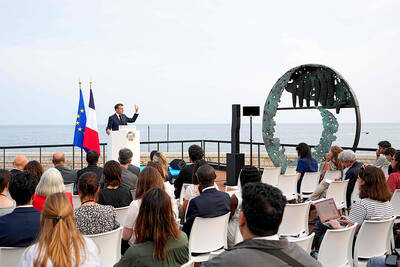
The UN Ocean Conference wrapped up in Nice, France on Friday last week with world leaders taking major steps toward marine protection and vowing a showdown when nations meet to negotiate rules for deep-sea mining next month. But a lack of funding pledges and the total omission of fossil fuels disappointed some observers. The summit was just the third — and largest yet — dedicated entirely to what the United Nations calls an “emergency” in the world’s oceans. The High Seas Treaty, or Global Ocean Treaty, is also known as the Agreement under the United Nations Convention on the Law
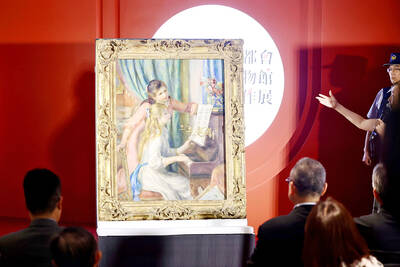
A: The National Palace Museum (NPM) has launched an exhibition, titled “From Impressionism to Early Modernism.” There are 81 masterpieces from the Metropolitan Museum of Art on display now. B: The exhibit, held to celebrate the NPM’s centennial, must be so spectacular. A: It includes artworks by 38 artists, such as Renoir, van Gogh, Cezanne, Matisse and Gauguin. B: The Fubon Art Museum has also launched an exhibit featuring a number of artworks of Impressionism, including Monet’s “Water Lilies.” A: And the New Taipei City Art Museum just had its grand opening, so there are even more exhibitions

A: What exhibitions are you going to see this summer? B: The 100% Doraemon & Friends exhibit is set to open on June 28. A: The news says there will be a 12-meter-tall giant Doraemon model at the Huashan 1914 Creative Park. B: The One Piece Carnival will set sail on the same day. A: And the D’festa Taipei 2025 – featuring exclusive content from K-pop supergroups such as BTS, NCT and Twice – is also set to begin next Friday. Isn’t that cool? A: 今年夏天還有什麼展覽可看啊? B: 「100%哆啦A夢 & Friends特展」即將在6月28日開幕。 A: 新聞說在華山1914文創園區會場,還有12米高的巨型哆啦A夢呢! B: 航海王「One Piece歡樂派對嘉年華」也將在同日啟航。 A: